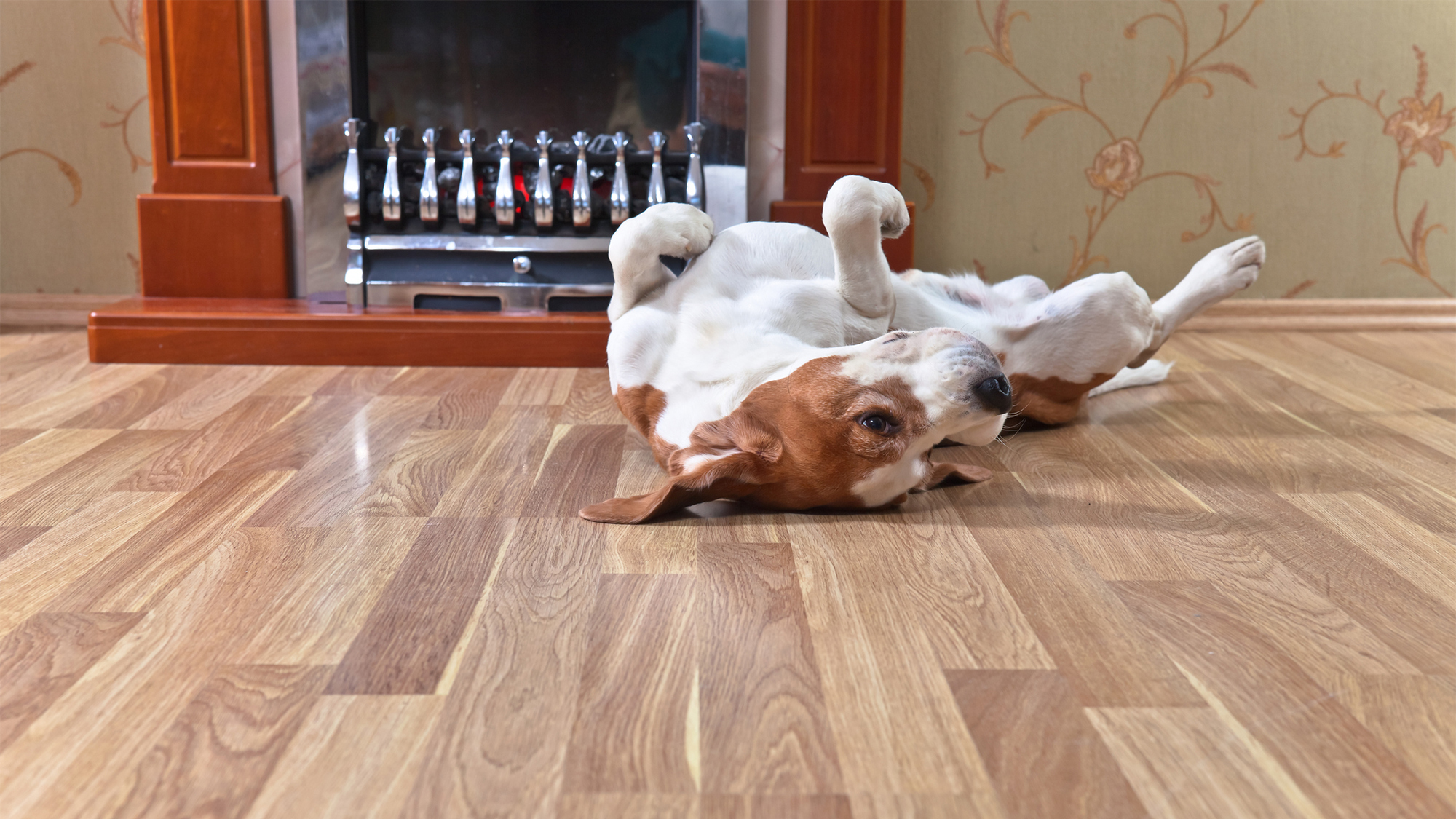As a loving dog owner, it’s heartbreaking to see your furry friend’s playful antics leave unsightly scratches on your cherished wood floors. But don’t despair, as these imperfections can be remedied with a few simple yet effective techniques. In this comprehensive guide, we’ll provide you with a step-by-step approach to restore the pristine beauty of your wood floors and ensure your canine companion’s happiness without compromising the elegance of your home.

Image: carpet.vidalondon.net
Understanding the Anatomy of Dog Scratches
Causes and Types of Scratches
To effectively tackle dog scratches, it’s essential to understand their origins. These scratches typically arise from your dog’s claws, which are composed of keratin, a protein that’s also found in human fingernails. When your pet’s claws make contact with a hard surface like wood floors, they can leave behind superficial marks or deeper gouges, depending on the force of the impact and the condition of the claws.
Preventing Future Scratches
While scratches are inevitable, there are proactive measures you can take to minimize their occurrence. Regular nail trimming is crucial, as long nails are more prone to scratching surfaces. Additionally, providing your dog with designated scratching areas and toys can redirect their desire to scratch away from your precious wood floors.
Step-by-Step Repair Techniques
Minor Scratches: The Gentle Approach
If your dog’s scratches are superficial, a simple solution may suffice. Apply a small amount of furniture polish or olive oil to a soft cloth and gently rub it into the scratch in a circular motion. Follow up by wiping away any excess with a clean cloth. This technique effectively fills in minor scratches, blending them with the surrounding wood.

Image: housetrick.com
Moderate Scratches: The Sanding Method
For more prominent scratches, a fine-grit sandpaper (220 or finer) proves effective. Use light pressure to sand away the damaged wood surface, always following the grain direction. Once the scratch is less visible, apply wood filler or a matching wood stain to restore the wood’s original color. After the repair has dried, sand the area lightly again and apply a protective layer of sealant or finish to prevent future damage.
Deep Scratches: The Expert Intervention
If the scratches are deep and extensive, it’s advisable to seek the assistance of a professional floor refinisher or a skilled carpenter. They possess the expertise and specialized tools to carefully remove the damaged wood and replace it with a matching piece. The repair process involves precision cutting and sanding, ensuring a seamless transition between the new and old wood. Upon completion, the repaired area will be indistinguishable from the rest of the floor.
Expert Tips and Recommendations
Choose the Right Repair Technique
Assess the severity of the scratches to determine the most appropriate repair technique. For minor scratches, a simple DIY approach using household items may suffice. Moderate scratches require a more meticulous process involving fine-grit sandpaper and a touch-up with wood filler or stain. Deep scratches warrant professional intervention to ensure proper restoration.
Test the Repair Method
Before applying a chosen repair method to the entire scratched area, test it on an inconspicuous spot to ensure it blends seamlessly with the surrounding wood. This step minimizes the risk of unsatisfactory or noticeable repairs.
FAQ: Your Questions Answered
Can I use my dog’s toenail clippers to trim his/her nails?
Yes, but specifically designed dog nail clippers provide greater control and precision. Using human nail clippers may inadvertently cut the quick, which is the sensitive, blood-filled part of the nail, causing pain and bleeding.
How To Fix Dog Scratches On Wood Floor
Is it possible to prevent my dog from scratching the wood floors entirely?
Completely eliminating scratching is challenging, as it’s a natural canine behavior. However, a combination of nail trimming, designated scratching areas, and positive reinforcement can significantly reduce the likelihood of scratches.
Conclusion: Restoring Beauty, Preserving Bonds
Whether you’re a seasoned wood floor owner or a first-time dog parent, navigating the challenge of dog scratches can be a daunting task. By understanding the causes and types of scratches, adopting effective repair techniques based on the damage severity, and implementing preventive measures, you can protect your wood floors while fostering a harmonious coexistence with your beloved canine companion. Remember, with a little effort and expert guidance, you can restore the beauty of your wood floors and maintain the joy and companionship that only a furry friend can bring.
Call to Action: Share Your Success
Have you successfully tackled dog scratches on your wood floors? Share your experiences, tips, and any additional questions you may have in the comments section below. Your insights will not only benefit other pet owners but also contribute to the collective body of knowledge on wood floor maintenance.